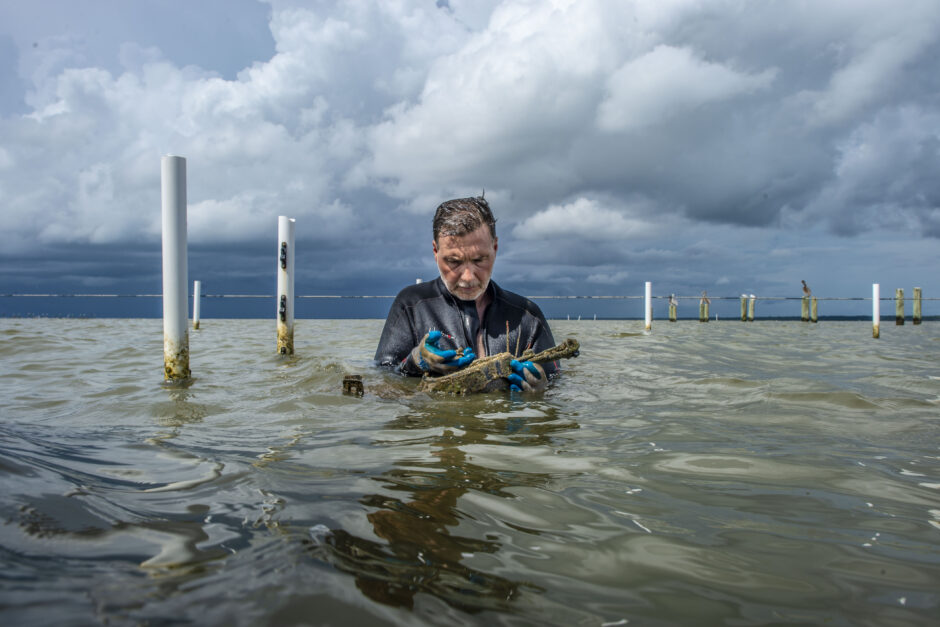Climate Change Impacts on Fishery Resources in the Southwest Atlantic Ocean
 Auburn University School of Fisheries Associate Professor Dr. William “Bill” Walton looks at the oysters in their floating cages in Mobile Bay near Dauphin Island, Alabama. (Credit: Preston Keres / USDA via Flickr Public Domain)
Auburn University School of Fisheries Associate Professor Dr. William “Bill” Walton looks at the oysters in their floating cages in Mobile Bay near Dauphin Island, Alabama. (Credit: Preston Keres / USDA via Flickr Public Domain)Climate change’s impacts on fishery resources have been observed across the world in fresh and salt waters. Fish distribution, population sizes, native biodiversity, and other variables have shifted under climate change and shaped the availability of resources.
How Climate Change Impacts Fishery Resources
Climate change has led to increased precipitation, droughts, extreme temperatures, water level rises, and other events that impact human populations—whether it be directly or indirectly.
Increased precipitation and weather events like hurricanes displace coastal communities that rely on the ocean for food, recreation, and employment. Similarly, rising water levels due to precipitation or glacial melting under increased temperatures have led to beaches disappearing, according to a 2020 study published in Nature. The changing shorelines result in fish migrating based on preferred habitat depths.
On the other side, droughts lead to lower water levels, changing fish distributions and a loss of circulating water, which exacerbates other water quality issues, according to the International Joint Commission. Extreme temperatures lead to warmer waters that can harm temperature-sensitive species, leading to death, disease, demographic shifts, and behavioral shifts.
Ultimately, fishery resources are negatively impacted by climate change, and managers will need to develop comprehensive monitoring strategies and management plans to account for the changing climate.
Fisheries in the Southwest Atlantic Ocean
The Southwest Atlantic Ocean provides essential fishery resources to southern Brazil, Uruguay, and the northern shelf of Argentina. Holding significant biodiversity of marine vertebrates threatened by climate change, species-based research is essential to better understanding the influence of climate change.
A 2023 study published in Regional Environmental Change combined a trait-based framework and long-term landing records to assess species sensitivity to climate change and identify potential changes in the distribution of important fishery resources.
In this study, bony fishes, chondrichthyans, crustaceans, and mollusks were focused on particularly as these species are most important to the region. Ultimately, mollusks were found to be the most sensitive (moderate to high), followed by chondrichthyans.
Results of the landing record suggest that the bulk of past landings were from a relatively climate-resilient species. However, future catches, and even entire benthic fisheries may be jeopardized because some of the most exploited species in the region showed very high sensitivities and the representation of landings may ultimately change.
Conclusion
As climate change worsens due to man-made stressors, fishery managers will have to modify stocking efforts, monitoring approaches, and fishing regulations in response to these shifts. Active monitoring of water quality conditions and aquatic species (fauna and flora) will help inform new strategies and protect fishery resources for years in the future.


0 comments